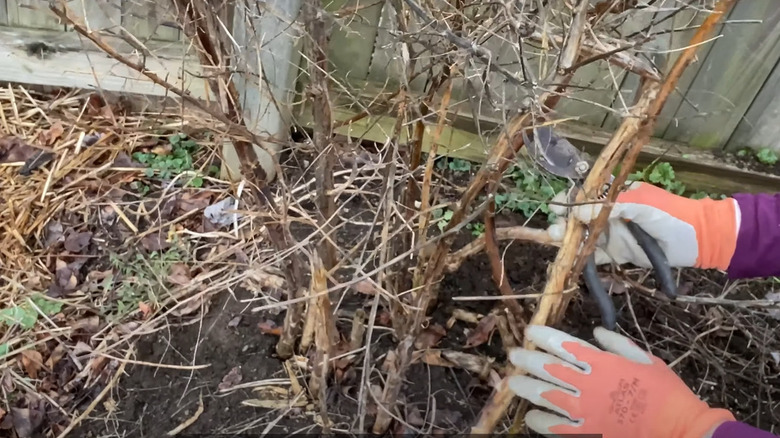Many gardeners delight in growing asparagus (Asparagus officinalis), for their spears make delectable ingredients in salads, soups, and stews. Their ornamental beauty is positive, too. But pruning these perennials at the right time is crucial to enjoy a bountiful harvest. Although asparagus plants should always be clipped back when they’re dormant, factors like weather, pest infestations, aesthetics, and time constraints dictate the exact timing. They can be snipped at the end of fall or during early winter after the foliage has turned brownish-yellow and withered down. But some prefer delaying their decision to early spring — before new growth sprouts and soil temperatures hit 50 degrees Fahrenheit — because the snow insulates the plants’ crowns, saving them from frost damage.
Cutting back asparagus in its dormancy is important, given its lifecycle. Post-harvest, the shoots assume an unruly, bushy form of photosynthesizing ferns (tops) that produce food through summer and early fall. As the temperatures drop, the ferns haul the food down to the roots, where it remains until it’s time to grow new spears come spring. Unfortunately, many gardeners make the mistake of pruning the tops too early, gravely diminishing the food stores and the following year’s harvest. So, wait until the first frost hits and kills the foliage before giving asparagus plants their much-desired haircut.
Determining the right pruning time

SavvyGardening / YouTube
It’s safe to prune asparagus after its fronds brown and die back, which usually happens during the fall. Cutting them down at the beginning of dormancy leaves your garden looking tidy and clean, which is easier on the eye than decaying foliage. Another benefit of fall-winter pruning is that it takes care of any overwintering pests, including beetles and aphids. Common asparagus beetles — the bluish-black bodied, cream-mottled insects — are asparagus’ bane because they eat the ferns, hurting the plant’s food production and vigor in the long run. Plus, they make the plant more susceptible to fungal diseases, as they eat down the ferns, removing the plant’s protection. As these pests hide in the plant’s hollow shoots in the winter and lay eggs that pupate into adults later, pruning at the beginning of dormancy removes the problem immediately.
However, in some areas, the plants may continue to produce food beyond the season’s first frost, calling for late winter pruning. But as shearing ferns in the snow isn’t ideal, this task is best left on the spring checklist. Besides, waiting to prune allows snow to accumulate on the dead foliage, affording winter protection. The cover is also tantamount to 1 inch of rain, quenching the asparagus’ moisture needs for vernal growth. That being said, waiting until spring may be infeasible for gardeners who’ll be busy with activities like mowing and pre-emergent fertilizer application.
Avoid pruning early and mulch afterwards
Asparagus is a crop that will pay you for 20 years! Once you set a bed up, it will produce for decades. In winter, it’s important to cut back the top growth as it starts to yellow and cover with a few inches of your favorite mulch. This will protect it during the cool season, so in Spring it’s coming back with full force.
♬ original sound – Epic Gardening
Watch on TikTok
Higher carbon storage and nutrients in the crown and roots lead to more leafing, so keep asparagus ferns working as long as they can before pruning. If you cut the plant back early, be prepared for a poor harvest. Simply put, let frost destroy the foliage before clearing it out. However, you can make an exception for pest-infested fronds, since the feeders will offset all production gains. Further, if you’re using female asparagus plants that set characteristic red pods, remove the seeds. If you don’t, the plant will begin self-propagating, which will shrink food stocks.
Additionally, be wary of maintaining longer clipping lengths. Always use a sharp pair of hand pruners (for shorter plants) or hedge clippers (for taller plants) to shave the foliage down to the ground. Alternatively, leave up to 1-inch-tall stubs to help the plant avoid crown rot. Don’t leave the chopped leaves on the ground unless you’re confident they aren’t harboring pests (and their eggs). Also, don’t till them because they add little organic content — compost the ferns instead. If you can’t rely on snow to provide sufficient winter padding in your garden, spread 4-inch thick mulch containing pine shavings, needles, straw, or sawdust around the plant’s base. It will kill the weeds in your lawn as a bonus. Remove the mulch come spring so it doesn’t prevent new spears from emerging.